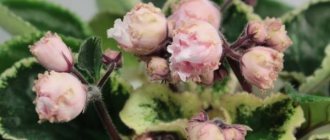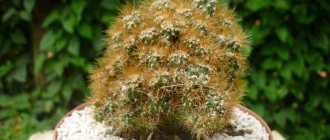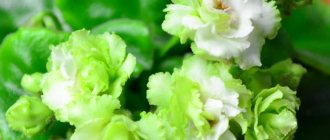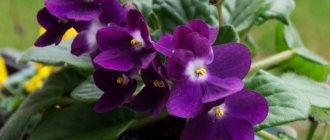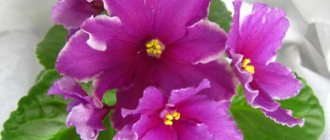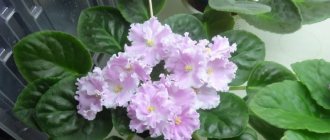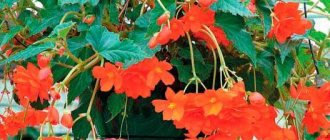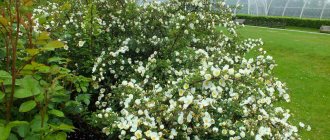The modern variety of Saintpaulia varieties is amazing. Before the start of active breeding work, specimens with purple or blue flowers were found at international exhibitions. Later, in the 30s of the twentieth century, magnificent double varieties with pink, white, red-violet petals were bred.
Nowadays, on the shelves of flower shops you can see plants of extraordinary beauty, with flowers of almost any (and even fancy) color.
Among them, the magnificent violet Ruffled Skies - “lace skies” - stands out. In the article we will describe its distinctive features, the subtleties of care and cultivation, and also give recommendations for replanting this Saintpaulia.
Violet Ruffled Skies: photo and description of the plant
Thanks to the breeding work of two violet growers - Kent Stork and Gordon Boone - a new variety of Saintpaulia called Ruffled Skies was developed in 1992. Its distinctive features were:
- very large double flowers of blue-blue color with a lightened or greenish border;
- quilted dark green leaves with a slightly corrugated edge;
- neat socket of standard sizes;
- tall peduncles.
The Ruffled Skies violet won the hearts of many amateur gardeners and began to be considered one of the best representatives of blue-flowered varieties.
Its lush, abundant and long-lasting flowering with huge lace stars can hardly leave anyone indifferent! This variety is still in great demand, it is so beautiful and harmonious.
Later, K. Stork and G. Boon obtained an interesting variety from this violet - Ruffled Skies 2. Its wavy, densely double flowers of cornflower blue color have a bright green border. The rosette of the plant is of standard size, and the leaves are dark green.
Reviews
Yakov. “The bouquet of the variety amazed me. The rosette practically forms itself, beautiful and symmetrical. “I liked the Podvenechnaya variety, and like all Moreva varieties, it took an honorable place in the collection.”
Many gardeners are interested in this variety.
Nadezhda Andreevna. “This variety has been making us happy for several years now. Flowering is abundant, frequent, rest periods are short. Hard worker, blooms and blooms. There were no problems with the beautiful Podvenechnaya. The socket is neat and even.”
Features of growing the Ruffled Skies variety at home. Lighting
Maintaining favorable environmental conditions is the key to good growth and abundant flowering of Saintpaulias. Ruffled Skies violet prefers good and long-lasting light, but is afraid of direct sunlight. North, northeast or northwest windows are well suited for growing this plant. On the south side, a violet can easily get burned, so it must be shaded.
Saintpaulia does not like the lack of lighting: in a dark room the color of its petals becomes pale and inexpressive. The use of additional light sources (fluorescent lamps) allows you to obtain year-round flowering.
Violet Malinka (K. Morev)
Fairytale violet Malinka Morev.
Authorship of the variety
An extraordinary variety of violet with a magnificent leaf rosette decoration at any phase of its life cycle refers to the individual achievements of one of the most famous breeders of the Russian school, Konstantin Lvovich Morev .
A world-famous Moscow master has been creating all kinds of varietal varieties of Saintpaulia for just under a quarter of a century and in his work invariably adheres to the principles of a conscientious and professional approach to business, conveyed to him by the master of domestic violet growing B. M. Makuni.
This variety was developed by Konstantin Morev.
IMPORTANT! Saintpaulia, which fully complies with all the strict requirements of the breeder, regularly participates in various exhibitions and becomes their laureate.
Taxonomy
Adhering to the official hierarchical principles of taxonomic periodization of all botanical objects, experts add Saintpaulia “Malinka” to the genus Saintpaulia (from the Gesneriev family), which is unusually significant in the number of varieties representing it and unsurpassed in the presence of all kinds of decorative silhouettes of violets:
- Seedling specimens, according to the diametrical coefficients of their overall shapes, represent a segment of the standard subspecies;
- And according to the type of leaf color - a group of variegated violets.
The variety in question belongs to the variegated violets.
Photo and description of the variety
Flower growers extremely value the Morev seedling for its amazing ability to develop harmoniously without any outside help, which is expressed in the procedure:
- Independent creation of charming bushes with standard scales from young leaves;
- Compact configuration;
- And a dense arrangement of tiers.
NOTABLE! The rosette of varietal violet for the most part does not suffer from a violation of decorative indicators, but changes in the necessary microclimate parameters can provoke the lowering of the leaf plates towards the flowerpot, which they will try to hug.
A positive thing for the decorative image of the violet is its ability to distribute all the leaves of the rosette over the surrounding space in a mosaic pattern so that the sun's rays fall fairly evenly on each part of the plant.
Along with the obvious health benefits of violets, this feature provides the plant with a chic silhouette.
Violet leaves of medium parameters have:
- Smoothly - an elongated shape ending with a slight point;
- Symmetrical venation pattern with a clearly visible central vein of a light green color;
- Shiny and smooth surface;
- Slightly wavy edge outline and hardly noticeable;
- Pointed teeth on the lateral edge.
Due to the wavy structure, the leaf plates can be folded upward along the main vein , forming small shuttles.
The coloring of the leaf plates is responsible for the decorative effect of the violet:
- As during its flowering;
- So it is in the intervals between these important stages of life.
The middle of each leaf in a shade of dark green is framed with a lace braid of transitions of white and beige tones.
The middle of the leaves of the flower are dark green in color.
ATTENTION! The variegated color of leaves can vary in brightness and area parameters, which is largely determined by the temperature gradient.
Violet SM-Malinka, according to the varietal description, blooms in caps of significant volume . Its flowers are somewhat small in size, which is successfully offset by their terry structure, which:
- Clearly noticeable already at the first opening of the buds;
- And only increases in parameters with subsequent waves of flowering.
An important characteristic of the variety is the delicate beauty of flowers with fantasy notes in color :
- The main background of the flower is a smooth flow of different shades of pink into each other;
- Each petal along the wavy edge contour is framed by a thin braid of a fantasy nature, which stands out in the general space with a crimson color scheme;
The presented violet has an unusual color of flowers. - From the borders of the ribbon to the center of the petals, the fantasy pattern continues in the form of speckled splashes;
- The flower ensemble is completed with the finest white illumination of the contour.
Sports
The violet periodically shows signs of sporting behavior , thriving with corollas of a darker color in the absolute absence of fancy graphics on the edges of the petals.
The variety has dark-colored sports.
Favorable temperature conditions
Violet Ruffled Skies prefers a calm, even temperature regime, without sudden changes and drafts. Optimal summer range: +20…+24 °C, winter: +16…+18 °C. Lower temperatures slow down the rate of growth and flowering, while higher temperatures prevent the formation of buds. In winter, the plant will feel uncomfortable on cold windowsills. It is advisable to use heat-insulating material and not place the pot close to the glass.
Origin story
The violet variety “Bronze Horseman” was bred in 2011 by breeder from Ukraine Elena Lebetskaya. The breeder was faced with the task of obtaining unusual flowers that would match the shade of the leaves.
The homeland of all violets is the East African province. In honor of the governor of this province, another name for violets is “Saintpaulia”.
Humidity and watering
Ruffled Skies violet prefers average air humidity (not lower than 45%). Excessive dryness coupled with high temperature leads to disease and lack of flowering. During the dry summer period, you can use pallets with wet sand or expanded clay, or lay sphagnum moss on the soil surface. It will prevent the rapid evaporation of moisture and drying out of the earthen coma.
As for watering, it should be careful and moderate. Moisten the earthen ball no more than a couple of times a week, using soft water at room temperature. The soil is watered carefully, preventing moisture from getting on the outlet, and excess water is drained from the pan. In the winter season, the plant is moistened less frequently, waiting until the earthen clod dries thoroughly. Excessive substrate moisture quickly leads to root rot and plant death.
Diseases
Violet Bronze Horseman is exposed to fungal diseases. Among them the most common:
late blight;- gray and brown rot;
- root rot.
The main reason for the development of violet diseases is non-compliance with the rules of agricultural technology (overmoistening, use of cold water, low temperature and high humidity). The following drugs are used to fight:
- Maxi.
- Aktara.
- Prova-do.
- Aktofit.
- Fitoverm.
Dangerous pests include:
- aphid;
- mites;
- thrips;
- nematodes.
TIP : Remove the affected parts of the plants, hang sticky tapes to catch insects.
Watch a video about diseases and pests of violets:
We invite you to learn about other varieties of violets, which were bred by the following breeders: T. Pugacheva (PT), N. Puminova (YAN), T. Dadoyan, N. Skornyakova (RM), S. Repkina, E. Arkhipov, Violet breeder (AV ), B.M and T.N. Makuni, K. Morev, E. Korshunova.
Transplanting Saintpaulia. Selecting good soil and pot
A new, newly acquired plant definitely requires a transplant. The fact is that violets being prepared for sale are grown in peat with a large number of growth stimulants. This soil mixture is not suitable for long-term maintenance of plants due to its excessive moisture capacity and tendency to sour.
The soil for Saintpaulia should be light, moderately loose, moisture-permeable and breathable. You can purchase a special soil mixture for violets in the store or make it yourself from two parts of turf soil, one part of sand and one part of peat. It is recommended to add a small amount of charcoal to this mixture.
Note! If you plan to use a ready-made Saintpaulia store-bought mixture, it is advisable to add a small amount of sphagnum moss, vermiculite and charcoal to it.
Which pot is better to choose? Definitely not too large, no more than 12 cm in diameter, and always with drain holes. Otherwise, the risk of root rot in the Ruffled Skies violet increases significantly. Growing in containers of inappropriate volume slows down or even stops the flowering of the plant.
Appearance
The Bronze Horseman variety is characterized by the following appearance features:
Leaves . The leaf blade is round in shape and has wavy edges. The surface is covered with fine pile. The shoots of the young plant are light green. Old leaves turn dark green. The color of the foliage is uniform, there are no inclusions. As soon as a full-fledged rosette is formed, all the leaves will become the same color.- Flowers . 3-5 large buds are formed on one brush. During flowering they are all the same size. The surface of the petals is waxy and the color is pink or white. Their edges are uneven, lacy, velvety. The color can be light green or bright green. At the border between pink and green, a copper tint appears, hence the name of the plant.
- Stems . They are tight, fleshy and break easily. In the center of the rosette they are directed upwards, and in the rows they diverge to the sides. Since they are quite fragile, it is important to be extremely careful during transplantation.
- Root . The root system is small and weak. The soil should always be loose, air- and moisture-permeable.
Transshipment of Saintpaulia after quarantine
Before replanting, you must carefully inspect the plant, remove all damaged leaves and rotten flowers. Next, you should wash the violet under running water to remove possible pests. And then put it “quarantined” in a room separate from other house plants. Over the next few days, do not water the violet, waiting until the earthen clod dries out.
How to properly replant a Ruffled Skies violet? The description of the procedure is as follows. Vermiculite is placed in a new pot, and expanded clay is placed on it. This is done so that excess water flows freely into the pan. Next, the soil mixture is laid out on the expanded clay. The violet is watered and after some time carefully removed from the old container, trying not to damage the roots. Place the plant in a new pot and cover it with soil. Easy to compact and shake. A layer of soil is poured along the root collar of the plant and then watered. The pot is slightly tilted from side to side to make sure that the violet “sits” tightly enough in the ground and does not wobble.
The transplanted plant is covered with polyethylene and left alone. After two or three days, the violet is inspected and watered if necessary. After five days they begin to “ventilate”, and after ten they completely remove the plastic bag. Thanks to such careful handling, your plant will feel good and bloom in 1.5-2 months.
Problems during cultivation
Since Magenta Violet is a capricious plant, any incorrect action regarding the regime can cause problems.
The main difficulties and their solutions are listed below:
- Crushed inflorescences - overheating. Move the plant to a cooler place.
- The foliage has faded - there is a draft. Provide the plant with safe ventilation and keep it in a place protected from temperature changes.
- Growth has slowed down, there is no flowering - lack of nutrients. Fertilize on time, alternate organic complexes with mineral ones.
- The appearance of rot spots on leaves and stems (fusarium) is a sharp drop in temperature. During the rest period, the temperature is reduced gradually, by several degrees (temperature below +16 ° C is critical). The second reason is humidity. It is necessary to monitor the watering rate.
- Brown dry spots on the foliage are signs of burns. South windows should have a protective film or curtain.
- Powdery mildew (white spots on green parts) - high humidity. Do not over-water the flower. Use watering methods recommended for the variety. Fungal diseases (fusarium, powdery mildew) can be prevented by spraying with a solution of potassium permanganate once a month. Flowers are difficult to treat: the delicate foliage does not withstand spraying with fungicides. Remedy: after treatment for medicinal purposes, transplant to a new location.
Violets are practically not susceptible to pests.
Occasionally, whitefly attacks, a white fly that lays eggs on different parts of the plant. The harm it does is great. Its offspring feed on the sap of the plant, causing the leaves to curl and die. Adults can be collected by hand using sticky tapes, and eggs and larvae are washed off with soap and water. Then the bush is treated with green soap (10 g/1 l of water). After water procedures, the foliage should be thoroughly blotted with a napkin.
Saintpaulia Magenta is loved by gardeners for its large and bright flowers. You can achieve flowering by following the care rules and providing the plant with the necessary microclimate.
Reproduction
Leaf cuttings are used for propagation. Thanks to them, you can get high germination even if you use a fragment of a leaf.
Procedure:
- Select a healthy and undamaged leaf from the second row.
- Carefully break it off and sprinkle the wound with ash.
- Cut the stem from the leaf at a distance of 2-3cm. Place it in a glass with soil.
- Cover with film to create a greenhouse effect.
After 3-4 weeks, sprouts will appear. If an adult plant has stepsons, then they should also be planted in a container.
IMPORTANT: It is the children who are able to produce flowers identical to those of the mother violet. When using a leaf for propagation, the leaves may differ as a result of mutation. Seeds
The seed method of propagating violets is used only by experienced gardeners, as this is a very labor-intensive process. But the result can be simply wonderful, because this is how a large number of varieties of violets were bred.
